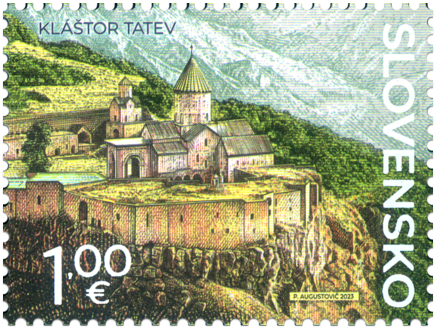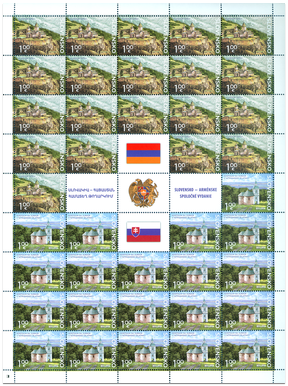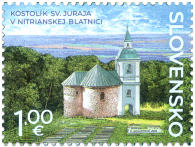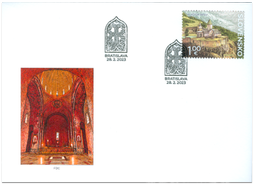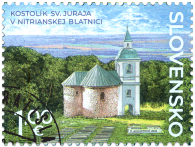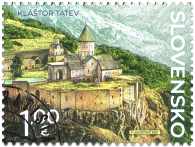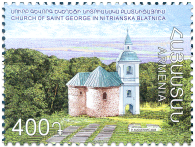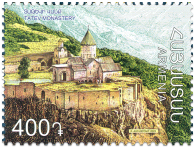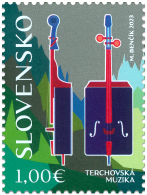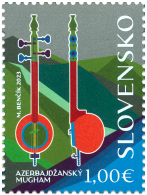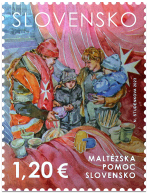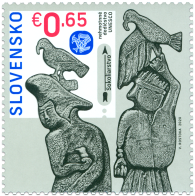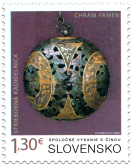789 Date of issue
28.02.2023 Face value
1.00 € Sell price
1.00 €
This postage stamp, jointly issued with Armenia in order to commemorate the 30th anniversary of the establishment of diplomatic relations, features the most significant Christian monuments from the 9th century. They form a religious link between our geographically distant countries. The Tatev monastery (in Armenian Տաթևի վանք), situated on a rock near the village of Tatev, is one of the oldest and most famous Armenian monasteries. It used to be the seat of the bishop of Syunik province and thus it was the important political, cultural and spiritual centre of the region. The monastic complex was included in the UNESCO representative list of World Cultural Heritage sites in 1995.
Following a decision made by Bishop Hovhannes, the main church of the monastery, dedicated to Saints Peter and Paul, was constructed between 895 and 906. It probably replaced an older church with the same patrons. The construction was co-funded by the ruler, Prince Ashot and his wife, Princess Shushan. Their relief images have been preserved in the niches within the eastern facade of the church. The cathedral was built in a contemporary Byzantine style as a cross-shaped church with a rectangular ground plan. It is dominated by the domed tower situated at the intersection of the limbs of the cross. In 930 it was further decorated with frescos as a project initiated by Bishop Hakob Dvinetsi. The single-nave church, dedicated to Saint Gregory the Illuminator, Armenia’s most important saint, is adjacent to the southern wall of the Saints Paul and Peter Cathedral. It was erected earlier than the cathedral, between 836 and 848, and was co-funded by Prince Philip of Syunik. The current appearance of the church dates back to 1295 when it underwent complete reconstruction after it had been damaged by the earthquake of 1138. The fortified monastic complex also includes the Church of Holy Mother of God, also known as the St. Astvatsatsin Church, which is linked to the northern fortifications. It was constructed in 1087 in order to put a roof over the mausoleum that contained the important figures of the monastery. As it was completely destroyed in the earthquake of 1138, the church owes its current appearance to its reconstruction in the late 20th century.
Situated to the south of the cathedral lies Gavazan, a stone column dedicated to the Holy Trinity, another major monument within the monastery. The upper part of this 8-metre-tall column, built in the 10th century, is decorated by a khachkar (in Armenian Խաչքար) type cross. Although it was installed on the column no later than the 18th century, its ornamental design was inspired by older medieval patterns. It is a typical example of Armenian Christian art of the period. The khachkar became part of the UNESCO Intangible Cultural Heritage in 2010.
Martin Vančo
Show less© 2024 POFIS - Postal philatelic service. All rights reserved

